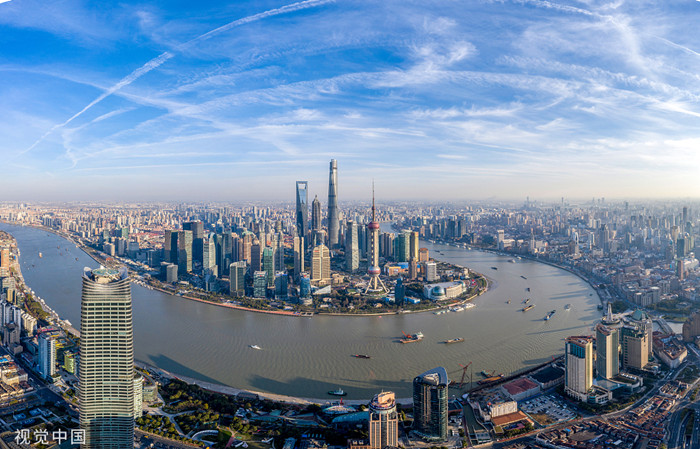Welcome to Pudong New Area

In 2023, Pudong aims to achieve GDP growth of about 7 percent, which is expected to be 1 to 2 percentage points higher than the city's annual average. [Photo/VCG]
Pudong New Area is the premier destination in Shanghai for investors, talents and innovators.
Home to the China (Shanghai) Pilot Free Trade Zone (Shanghai FTZ) and a host of world-class business parks, Pudong has the most supportive business environment in the city.
The district offers unbeatable policy support for businesses, a streamlined administrative system and public security services to help expats gain work and residence permits quickly and conveniently.
Come and explore YOUR Pudong!
Overview of Pudong New Area
1. History
Pudong, which used to be referred to as Chuansha, dates back to the Northern and Southern Dynasties (420-581). It was originally part of Huating county, Shanghai county and the Chuansha Civil Center during the Tang (618-907), Yuan (1271-1368) and Qing (1644-1911) dynasties, respectively. It became a county of Jiangsu province during the Revolution of 1911.
After 1949, Chuansha was removed from Jiangsu province and is now under the jurisdiction of Shanghai.
On April 18, 1990, the Party Central Committee and the State Council decided to make Pudong a national development area, opening a new chapter in Pudong's history.
In 1993, Chuansha county was revoked and the Pudong New Area was founded and enlarged with the establishment of Huangpu and Yangpu districts.
In June 2005, the State Council approved the Pudong New Area's role as the first pilot area for comprehensive reforms.
In 2009, the Nanhui Administrative Region was made a subordinate to the Pudong New Area, marking a new beginning for the second-round of development in Pudong.
In August 2013, the State Council decided to establish the Shanghai FTZ in Pudong.
In December 2014, the State Council approved the expansion of the Shanghai FTZ.
In August 2019, the Lin-gang Special Area, a newly added part of the Shanghai FTZ was officially established, and many people expected the area to become a new driver for China's opening-up.
2. Economic overview
Pudong New Area's GDP totaled over 1.6 trillion yuan ($237.31 billion) in 2022, up 1.1 percent, which was 1.3 percentage points higher than Shanghai's average growth rate, and accounted for 35.9 percent of Shanghai's total, according to the local statistics bureau. The area has continued to play its role as a stabilizer and driver for the megacity's economic development.
The gross industrial output value above designated size in Pudong totaled 1.34 trillion yuan in 2022, an increase of 4 percent from the previous year. The annual output value of Pudong's integrated circuit industry exceeded 100 billion yuan last year, growing by 24.9 percent year-on-year.
In 2023, Pudong aims to achieve GDP growth of about 7 percent, which is expected to be 1 to 2 percentage points higher than the city's average.
For the next five years, Pudong has set a goal of expanding its economic aggregate to 2 trillion yuan, its per capita GDP to 300,000 yuan, and its per capita disposable income to 100,000 yuan, respectively. Efforts are also being made to continue to enhance the area's cultural soft power.
3. Geographical location
Pudong is situated on the east bank of the Huangpu River, and rests at the intersection of China's coastal belt and the Yangtze River estuary. It borders the Yangtze River Delta urban megalopolis on one side and the Pacific Ocean on the other. With an average elevation of 3.87 meters, the altitude drops from west to east, and a 115-kilometer-long coastline.
4. Administrative Division
The Pudong New Area has a total area of 1,210 square kilometers, and a permanent resident population of 5.57 million. It consists of 12 communities and 24 towns.
 Contact Us
Contact Us



